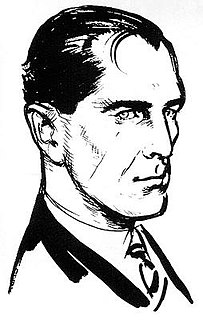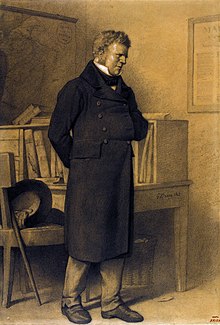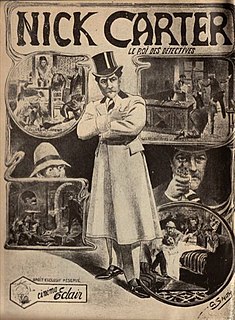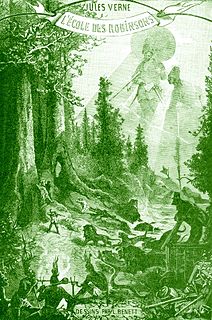
The James Bond series focuses on a fictional British Secret Service agent created in 1953 by writer Ian Fleming, who featured him in twelve novels and two short-story collections. Since Fleming's death in 1964, eight other authors have written authorised Bond novels or novelizations: Kingsley Amis, Christopher Wood, John Gardner, Raymond Benson, Sebastian Faulks, Jeffery Deaver, William Boyd and Anthony Horowitz. The latest novel is Forever and a Day by Anthony Horowitz, published in May 2018. Additionally Charlie Higson wrote a series on a young James Bond, and Kate Westbrook wrote three novels based on the diaries of a recurring series character, Moneypenny.

Les Misérables is a French historical novel by Victor Hugo, first published in 1862, that is considered one of the greatest novels of the 19th century. In the English-speaking world, the novel is usually referred to by its original French title. However, several alternatives have been used, including The Miserables, The Wretched, The Miserable Ones, The Poor Ones, The Wretched Poor, The Victims and The Dispossessed. Beginning in 1815 and culminating in the 1832 June Rebellion in Paris, the novel follows the lives and interactions of several characters, particularly the struggles of ex-convict Jean Valjean and his experience of redemption.

Apocalyptic and post-apocalyptic fiction is a subgenre of science fiction, science fantasy, dystopian or horror in which the Earth's technological civilization is collapsing or has collapsed. The apocalypse event may be climatic, such as runaway climate change; natural, such as an impact event; man-made, such as nuclear holocaust or resource depletion; medical, such as a pandemic, whether natural or man-made; eschatological, such as the Last Judgment, Second Coming or Ragnarök; or imaginative, such as a zombie apocalypse, cybernetic revolt, technological singularity, dysgenics or alien invasion. The story may involve attempts to prevent an apocalypse event, deal with the impact and consequences of the event itself, or it may be post-apocalyptic, set after the event. The time frame may be immediately after the catastrophe, focusing on the travails or psychology of survivors, the way to maintain the human race alive and together as one, or considerably later, often including the theme that the existence of pre-catastrophe civilization has been forgotten. Post-apocalyptic stories often take place in a non-technological future world or a world where only scattered elements of society and technology remain.

Henry Graham Greene, better known by his pen name Graham Greene, was an English novelist regarded by many as one of the greatest writers of the 20th century. Combining literary acclaim with widespread popularity, Greene acquired a reputation early in his lifetime as a major writer, both of serious Catholic novels, and of thrillers. He was shortlisted, in 1966 and 1967, for the Nobel Prize for Literature. Through 67 years of writings, which included over 25 novels, he explored the ambivalent moral and political issues of the modern world, often through a Catholic perspective.
A story within a story is a literary device in which one character within a narrative narrates. Mise en abyme is the French term for a similar literary device. A story within a story can be used in all types of narration: novels, short stories, plays, television programs, films, poems, songs, and philosophical essays. The inner stories are told either simply to entertain or more usually to act as an example to the other characters. In either case the story often has symbolic and psychological significance for the characters in the outer story. There is often some parallel between the two stories, and the fiction of the inner story is used to reveal the truth in the outer story. Often the stories within a story are used to satirize views, not only in the outer story, but also in the real world. When a story is told within another instead of being told as part of the plot, it allows the author to play on the reader's perceptions of the characters—the motives and the reliability of the storyteller are automatically in question. Stories within a story may disclose the background of characters or events, tell of myths and legends that influence the plot, or even seem to be extraneous diversions from the plot. In some cases, the story within a story is involved in the action of the plot of the outer story. In others, the inner story is independent, so that it can either be skipped over or be read separately, although many subtle connections may be lost. Sometimes, the inner story serves as an outlet for discarded ideas that the author deemed to be of too much merit to leave out completely, something that is somewhat analogous to the inclusion of deleted scenes with DVD releases of films. Often, there is more than one level of internal stories, leading to deeply-nested fiction.

SPECTRE is a fictional organization featured in the James Bond novels by Ian Fleming, the films based on those novels, and James Bond video games. Led by evil genius and supervillain Ernst Stavro Blofeld, the international organization first formally appeared in the novel Thunderball (1961) and in the film Dr. No (1962). SPECTRE is not aligned to any nation or political ideology, enabling the later Bond books and Bond films to be regarded as somewhat apolitical, though the presence of former Gestapo members in the organization are a clear sign of Fleming's warning of the Nazi fascists surviving after the Second World War first detailed in the novel Moonraker (1954). SPECTRE began in the novels as a small group of criminals but became a vast international organization with its own SPECTRE Island training base in the films, to replace the Soviet SMERSH.

Doc Savage is a fictional character originally published in American pulp magazines during the 1930s and 1940s. He was created by publisher Henry W. Ralston and editor John L. Nanovic at Street & Smith Publications, with additional material contributed by the series' main writer, Lester Dent. The illustrations were by Walter Baumhofer, Paul Orban, Emery Clarke, Modest Stein, and Robert G. Harris.

Carl Reiner is an American comedian, actor, director, screenwriter and publisher whose career spans seven decades.

Christopher William Bradshaw Isherwood was an English-American novelist. His best-known works include The Berlin Stories (1935–39), two semi-autobiographical novellas inspired by Isherwood's time in Weimar Republic Germany. These enhanced his postwar reputation when they were adapted first into the play I Am a Camera (1951), then the 1955 film of the same name, I am a Camera; much later (1966) into the bravura stage musical Cabaret which was acclaimed on Broadway, and Bob Fosse's inventive re-creation for the film Cabaret (1972). His novel A Single Man was published in 1964 and adapted into the film of the same name in 2009.
A look-alike, double, or doppelgänger is a person, real or fictitious, who closely resembles another person—respectively, real or fictitious—in appearance.

The BFG is a 1982 children's book written by British novelist Roald Dahl and illustrated by Quentin Blake. It is an expansion of a short story from Dahl's 1975 book Danny, the Champion of the World. The book is dedicated to Dahl's late daughter, Olivia, who died of measles encephalitis at the age of seven in 1962. As of 2009, the novel has sold 37 million copies in UK editions alone, with more than 1 million copies sold around the world every year.
Iron Man, Ironman or Ironmen may refer to:

A mystery film is a genre of film that revolves around the solution of a problem or a crime. It focuses on the efforts of the detective, private investigator or amateur sleuth to solve the mysterious circumstances of an issue by means of clues, investigation, and clever deduction.
Titan Publishing Group is an independently-owned British publishing company, established in 1981. It is based at offices in London's Bankside area. The books division has two main areas of publishing: film and television tie-ins and cinema reference books; and graphic novels and comics references and art titles. The company is a division of Titan Entertainment Group, which also owns Titan Magazines. As of 2016, Titan Books' editorial director is Laura Price.

Vampire films have been a staple since the era of silent films, so much so that the depiction of vampires in popular culture is strongly based upon their depiction in films throughout the years. The most popular cinematic adaptation of vampire fiction has been from Bram Stoker's Dracula, with over 170 versions to date. Running a distant second are adaptations of "Carmilla" by Sheridan Le Fanu. By 2005, Dracula had been the subject of more films than any other fictional character, save for Sherlock Holmes.

2001: A Space Odyssey is the 1968 science fiction novel written by Arthur C. Clarke and the 1968 film directed by Stanley Kubrick. It is a part of Clarke's Space Odyssey series. Both the novel and the film are partially based on Clarke's 1948 short story "The Sentinel", an entry in a BBC short story competition, and "Encounter in the Dawn", published in 1953 in the magazine Amazing Stories.

Titus B. Welliver is an American actor. He is best known for his portrayals of the Man in Black in Lost, Silas Adams in Deadwood, Jimmy O’Phelan in Sons of Anarchy, and the title role in the television series Bosch.

Godfrey Morgan: A Californian Mystery, also published as School for Crusoes, is an 1882 adventure novel by French writer Jules Verne. The novel tells of a wealthy young man, Godfrey Morgan who, with his deportment instructor, Professor T. Artelett, embark from San Francisco, California on a round-the-world ocean voyage. They are cast away on an uninhabited Pacific island where they must endure a series of adversities. Later they encounter an African slave, Carefinotu, brought to the island by cannibals. In the end, the trio manage to work together and survive on the island.
Organ transplantation is a common theme in science fiction and horror fiction. Numerous horror movies feature the theme of transplanted body parts that are evil or give supernatural powers, with examples including Body Parts, Hands of a Stranger, and The Eye.















